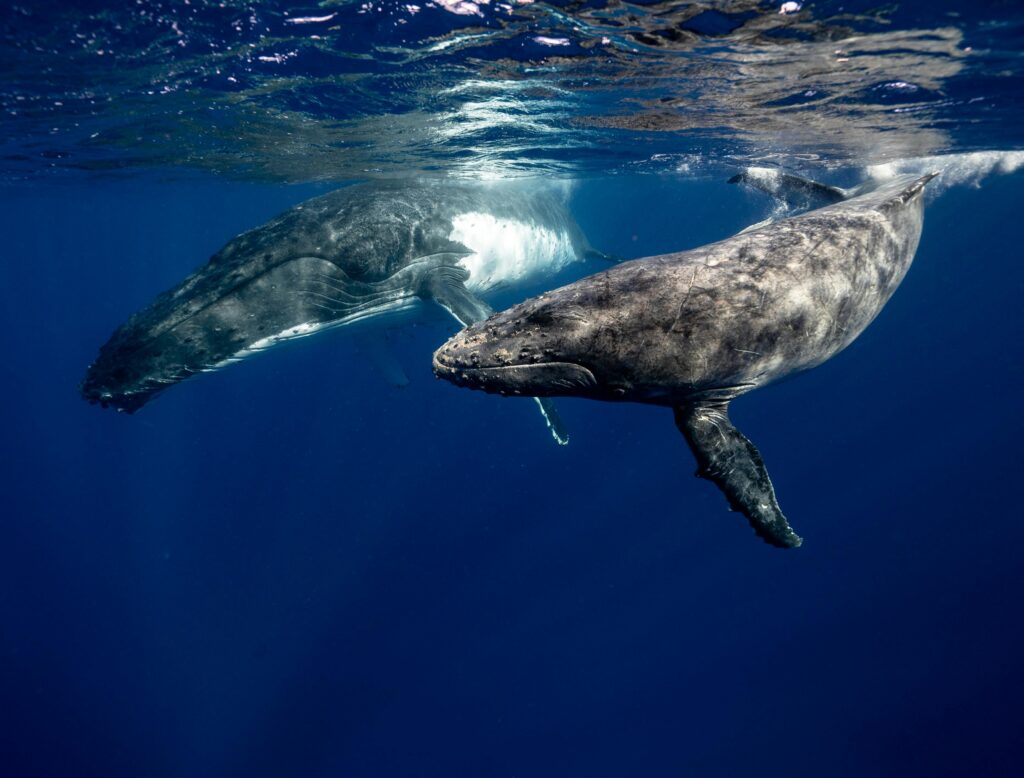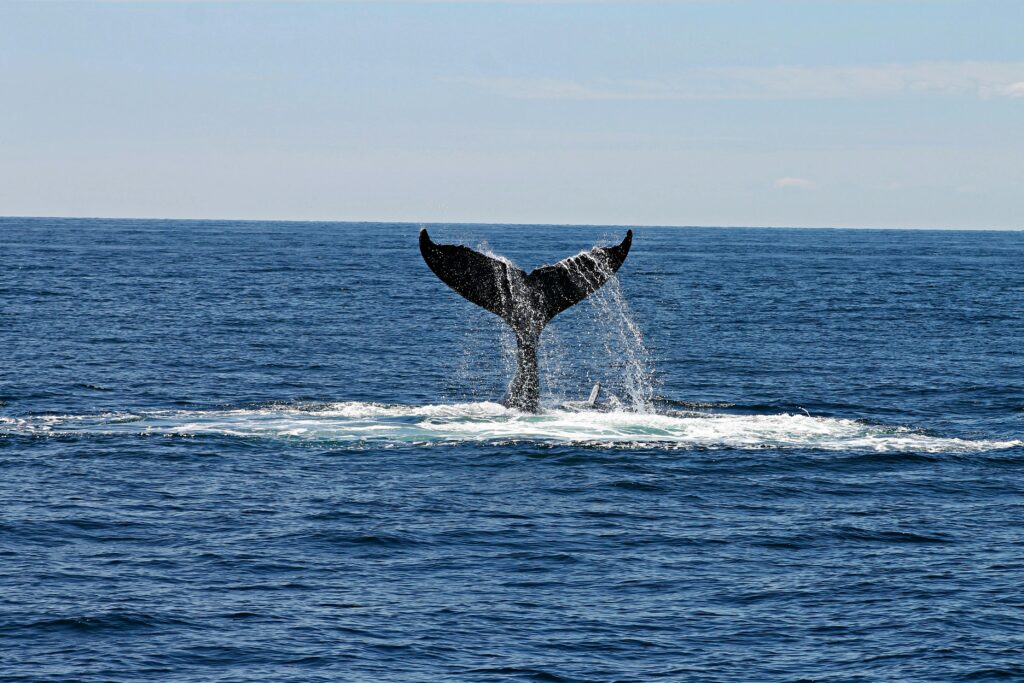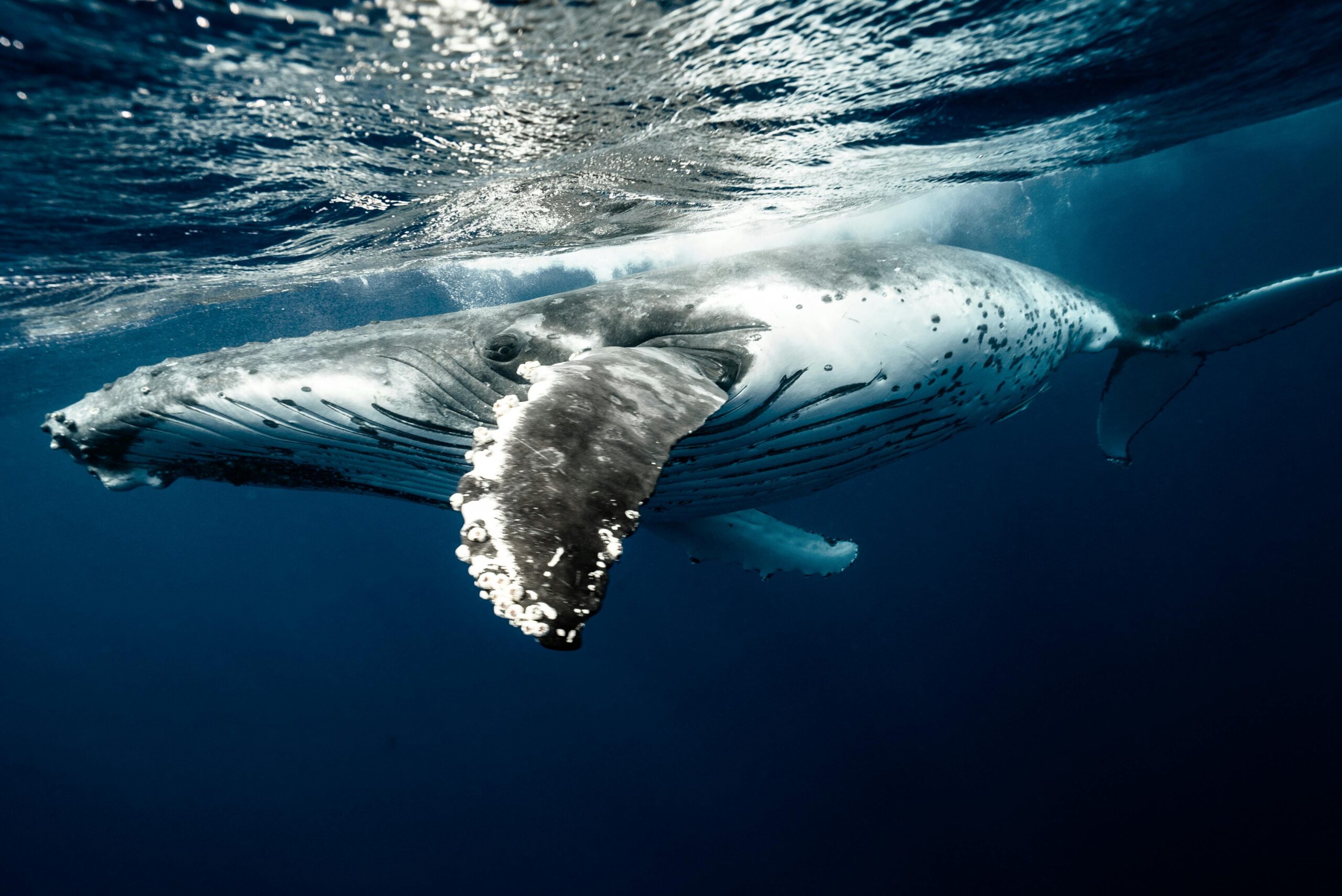Recent research has unveiled remarkable structural similarities between humpback whale songs and human language, offering profound insights into the evolution of communication across species. These findings not only highlight the complexity of whale vocalizations but also suggest that certain linguistic patterns may be more universal than previously thought.

Understanding Whale Songs
Humpback whales are renowned for their intricate songs, primarily produced by males during the breeding season. These vocalizations are composed of various sound units arranged into phrases, which are then repeated to form themes, creating a hierarchical structure. Over time, these songs evolve, with new patterns emerging and spreading across populations, a phenomenon reminiscent of cultural transmission in humans.
Parallels with Human Language
A pivotal study analyzed eight years of humpback whale recordings from New Caledonia and discovered that these songs exhibit a pattern known as “Zipf’s law.” This linguistic principle observes that in human languages, the most frequently used word occurs approximately twice as often as the second most common word, three times as often as the third, and so on. Remarkably, the “word-like” elements in whale songs follow this same distribution, suggesting a shared structural foundation between whale communication and human language.

Mechanisms of Learning and Transmission
The process by which humpback whales acquire and modify their songs bears a striking resemblance to human language learning. Research indicates that whales learn songs in segments, akin to how humans learn language in chunks or phrases. This method, known as “chunking,” allows for efficient learning and the ability to remix segments to create new songs, similar to how humans compose new sentences or musical pieces.
Beyond Humpbacks: Vocal Mimicry in Other Cetaceans
While humpback whales are celebrated for their songs, other cetaceans also display remarkable vocal abilities. Beluga whales, for instance, are known as the “canaries of the sea” due to their diverse vocalizations. Notably, a captive beluga named NOC was observed mimicking human speech patterns, producing sounds that resembled muffled conversations. This mimicry suggests a high degree of vocal learning and flexibility in belugas.
Implications for Understanding Animal Communication
The discovery of structural similarities between whale songs and human language challenges the traditional view that complex syntactic communication is unique to humans. It suggests that the building blocks of language—such as hierarchical structuring and cultural transmission—may be present in other species, having evolved independently in response to similar social and environmental pressures.

Commonly Asked Questions
1. Do whales have a language like humans?
While whale songs exhibit structural patterns similar to human language, they lack semantic meaning—that is, specific sounds are not directly associated with particular objects or actions. Therefore, whale songs are not considered a language in the human sense but may function more like complex musical compositions.
2. Why do humpback whales sing?
Primarily, male humpback whales sing during the breeding season, suggesting that songs play a role in mating behaviors, possibly to attract females or establish dominance among males. The exact purpose is still under investigation, but it is clear that singing is a crucial aspect of humpback whale social interactions.
3. How do whales learn their songs?
Whales learn their songs through social learning, listening to and imitating the songs of other whales in their population. This process allows for the rapid spread and evolution of songs within and between groups, similar to how cultural trends spread among human communities.
4. Do other animals show similarities to human language?
Yes, several animal species exhibit communication systems with parallels to human language. For example, certain bird species have complex songs with hierarchical structures, and some primates use vocalizations that can convey specific information. However, the degree of complexity and the presence of syntax vary widely among species.
5. What does Zipf’s law tell us about animal communication?
The presence of Zipf’s law in both human language and whale songs suggests that there may be universal principles governing efficient communication. This pattern indicates a balance between the effort required to produce sounds and the need for effective communication, potentially reflecting similar cognitive processes across different species.
In conclusion, the study of whale songs not only enriches our understanding of these magnificent creatures but also provides valuable insights into the fundamental nature of communication and the possible evolutionary pathways that have shaped it across species.
Sources National Geography


